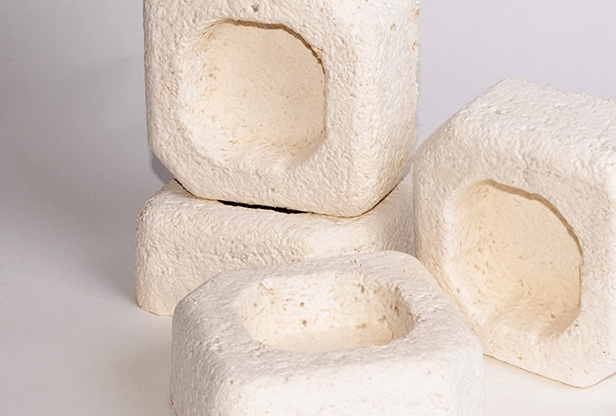Sustainability January 13, 2023
4 Major Sustainability Trends for 2023
Thoughtful product design and circularity are some of the areas to focus on in the new year.
Countless industries are now facing the facts on the dire need for greater sustainability in their products’ lifecycles. The genie is out of the bottle, and the consequences of consumption have changed the conversation on what and why we buy. Promo is among the many sectors taking a long look at how it can improve, with several trends bound to make their mark on 2023.
As is typical when an industry is trying to hold itself to new standards, “There are varying levels of sustainability theatre going on,” says Dan Cardozo, president and CEO of Ethix Merch (asi/189731) and a member of ASI Media’s Promo for the Planet advisory board. “We’re not going to make every promotional product sustainable, but how can we make sure we’re not giving things away to people who aren’t using them?”
Steve Starr, senior vice president for global programs and brand at Top 40 distributor Corporate Imaging Concepts (asi/168962), expresses a similar sentiment, noting that many commercial and consumer end-users are “starting to think seriously about their carbon footprint.”
“Sustainable products alone largely go unchecked and unaudited,” he continues. “Many times, we see a product that sounds eco-friendly, but really needs another review to determine whether its impact on the environment can be properly accounted for.” With eyes on these issues from all angles, promo experts share several areas gaining traction regarding safe and sustainable production.
1. You’ll hear more about: Circularity

Circularity is a sustainability concept that takes the end of an item’s useful life into account when it’s being produced. Kriya Stevens, director of apparel supplier econscious (asi/51656), says to consider the following questions: Can the product be recycled? If so, are there viable recycling programs readily accessible to consumers? Can traditional materials be replaced with materials that can be composted or recycled? “Products that can claim true circularity will set themselves apart from the pack,” she adds.
Textiles perhaps have the most work to do on circularity, says Ben Grossman, co-president of Grossman Marketing Group (asi/215205), Counselor’s 2022 Bess Cohn Humanitarian of the Year and founder of SwagCycle, a company that recycles, repurposes or donates unused and unwanted promo items. “Companies want to do business with other companies who are responsible in these ways,” he says, “so we’ve seen an increase in interest in that in RFPs. Companies don’t want to just make the item; they have to consider the product lifecycle.”
Cardozo’s Ethix is looking at moving its clients to products – he likes Everywhere Apparel (asi/53059) and Collection – that have their entire supply chain transparently disclosed, “all the way back to the ginning and spinning of the cotton, the sew/cut/dying, to the end of the life of the product.” That’s still a rarity among suppliers in the promo industry, he adds, but he’s hoping circular and transparent production will become more prevalent among ASI members.
2. You’ll hear more about: Pushing out PFAS

Last year, scientists made headway on a difficult problem: finding a cost-effective way to break up PFAS, per- and polyfluoroalkyl substances known as “forever chemicals,” that can leach out and contaminate soil and water even years after first coming into contact with them. In August 2022, the journal Science published research that indicated the chemicals could be essentially boiled away with the addition of two low-cost and widely available compounds. Because these PFAS chemicals are also commonly found on fabrics – particularly as waterproofing on performance apparel – Stevens says the promo industry is expecting “new requirements for chemical screenings related to PFAS to become part of fashion’s standard operating procedures.” She notes that the Environmental Protection Agency is still researching these chemicals, “but the jury is in for many scientists; these harmful chemicals need to be eliminated.”
Indeed, states are already enacting forever chemical bans. Both California and New York have legislation prohibiting PFAS in apparel. And 3M, parent company of Top 40 supplier 3M/Promotional Markets (asi/91240), announced late last year that it will stop manufacturing and using PFAS across its product portfolio by the end of 2025, in response to the accelerating regulatory trends and other factors. Expect momentum against PFAS chemicals to continue as 2023 unfolds.
3. You’ll hear more about: Thoughtful design

Grossman says that how a product looks factors heavily into whether it will have a long life. From T-shirts to totes, a nice graphic or illustration – with a logo used more subtly – will have broader appeal versus a basic tote blaring a giant company logo. “If you have the budget and time for planning, spend a little more on your design,” he says. For apparel, “Make the logo more subtle on the left sleeve or the back neck, and use the larger real estate for the beautiful illustration or message,” he explains. “Often, you don’t even need to spend more for production; you can do a beautiful design in one color. Simplicity can be elegant.”
Any company is going to want to be thoughtful about how to get its message across in a way that resonates. No matter the industry, Grossman says he’s noticed items that are message-driven sell much better than brand-driven ones.
4. You’ll hear more about: Packaging

Ecovative makes a packaging alternative to Styrofoam, composed of hemp and mycelium.
Packaging – ASI Media’s 2022 Product of the Year – is a hot topic for sustainability. Efforts continue to create packaging that’s easier to recycle than the plastic containers or laminated products more common in years past, says Grossman. In fact, Grossman Marketing’s own 2022 holiday gifting achieved this goal: The distributor gave its employees drinkware from Refresh Glass (asi/81255), which takes wine bottles and cuts them down into drinking glasses. And, he says, every piece of the packaging was fully recyclable, too.
Cardozo says company stores and online web stores, which still rely on cellophane and Styrofoam, have the most work to do in this area: “People are getting fancier and fancier all the time with what they want to provide for clients, but we need to be conscious of the impact on the environment.”
Starr shares this view, saying that he’s seeing major companies frequently placing such requirements on those they partner with. “We’re seeing a point of cognition across the world, where both commercial and consumer end-users are starting to think seriously about their carbon footprint,” he says.
For her part, Stevens has seen a viable alternative to Styrofoam in Ecovative’s mushroom packaging, made of hemp and mycelium, which is scalable and compostable. She also notes startups like Olive, which offers premium reusable packaging and claims retailers can save 50% on return shipping costs using its service. “Like most of the environmental challenges we face,” Stevens adds, “we expect to see solutions come in a myriad of forms.”

Promo for the Planet is your destination for the latest news, biggest trends and best ideas to help build a more sustainable and socially responsible industry.

Promo for the Planet is your destination for the latest news, biggest trends and best ideas to help build a more sustainable and socially-responsible industry.
